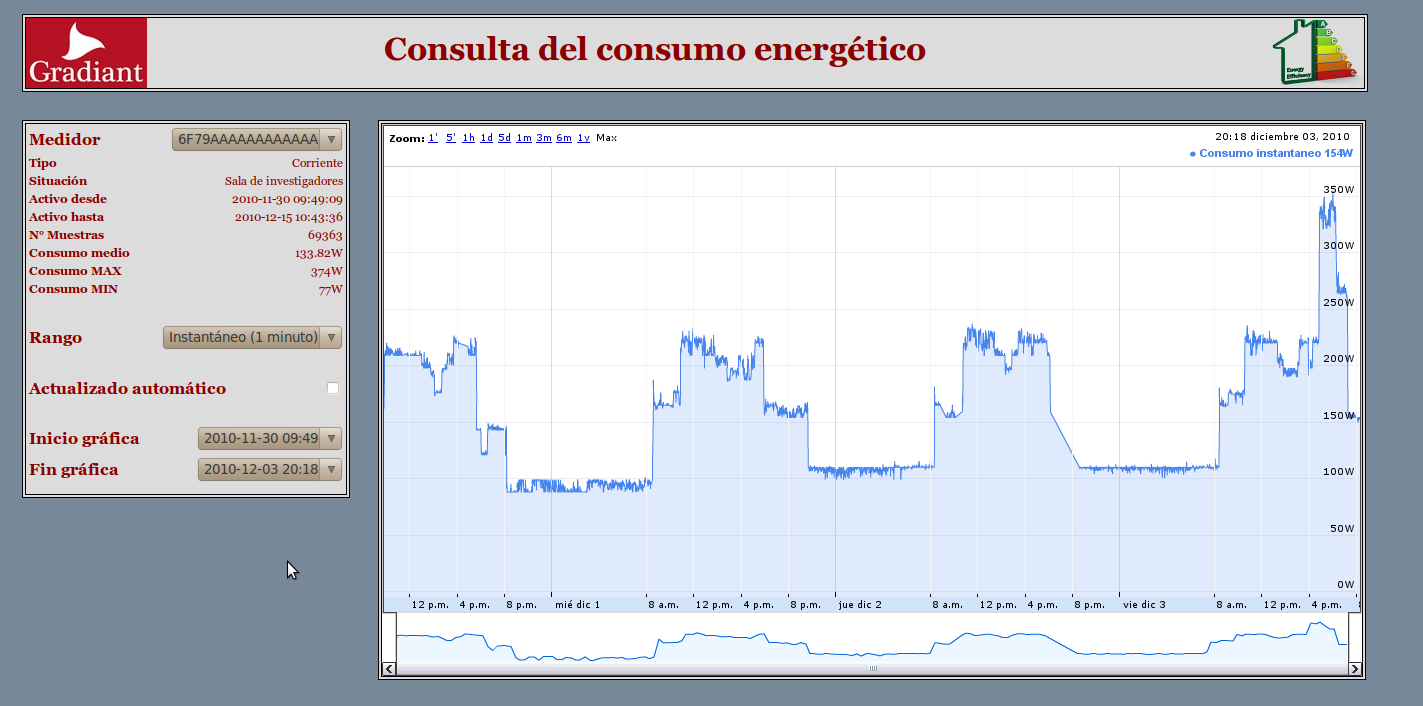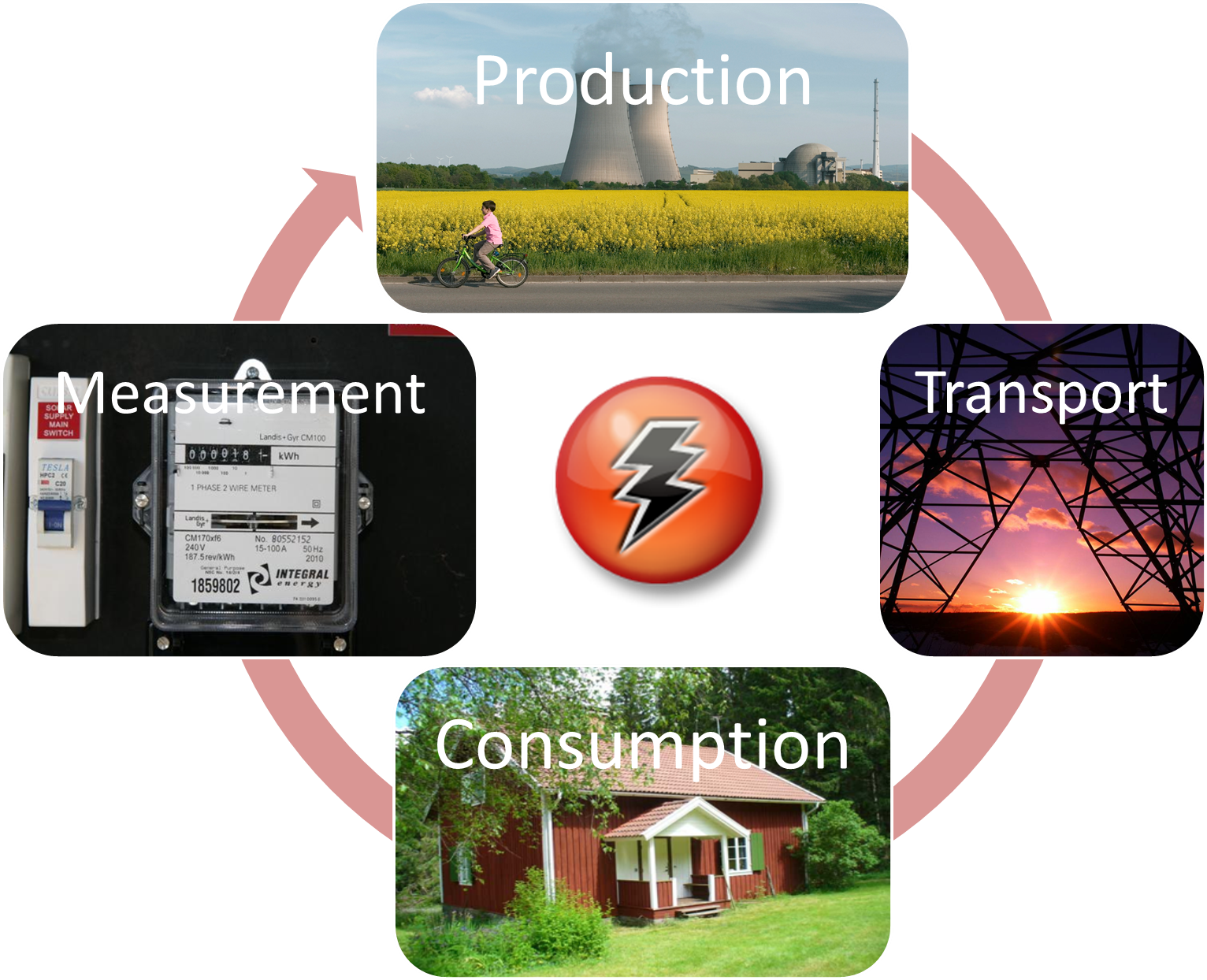
One of the principles to make energy-saving effective, starting from the user side, is environmental awareness. Involving users in energy saving and emission reductions may become excessively complex if they are not provided adequate feedback channels, so that they can verify that their actions have the desired effect.
The main channel is provided by in-home energy meters, which are devices that can monitor the flow of current into a home or a specific electrical system; and display the measured values to the user. There are commercial devices for these purposes, such as those by Plogg or those compatible with the web interface of Google Power Meter.
However, despite their clear application as information systems for users, energy meters have a more relevant task for the industry: automated meter reading. One of the main problems in the production of electrical energy as carried out today is the extreme difficulty of storing it. Therefore, for producers, it is vital to estimate accurately the energy demand in a period of time in order to adjust the production.
Currently, the estimation of the energy that is consumed in a period of time is statistical, taking into account large amounts of data collected for years. However, this estimation could greatly improve if electricity consumption data were available in real time, in order to respond more efficiently to peaks in demand (using what is known as demand-response).
This is why energy consumption data of houses and buildings is so valuable for electric producers, which have been promoting smart meters for a long time, both for avoiding the cost of manual meter readings and for reducing energy waste.
The introduction of automatic measurement systems is a complex problem, regarding hardware -which must be secure, reliable and tamper-resistant- and network communications to connect meters with the centers were data are collected and processed.
GRADIANT has several open working lines related to power metering, covering the design of in-home meters and the communications networks linking them.



